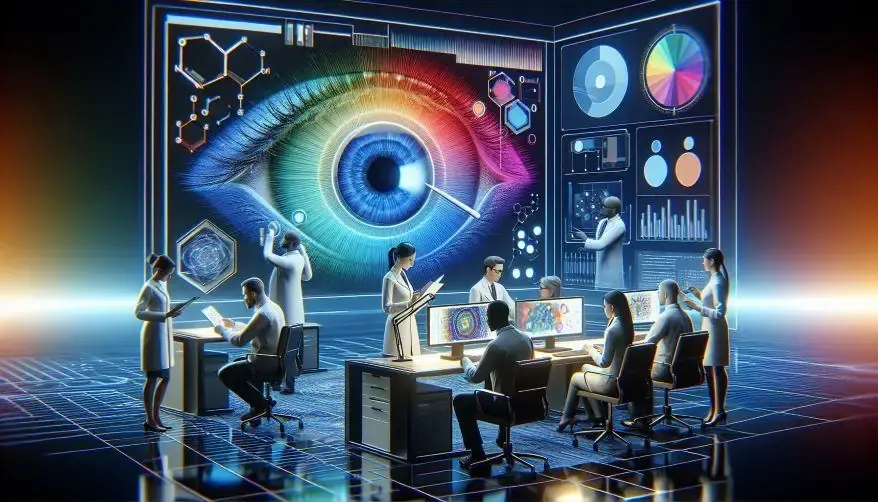Discover Olo: The Brand New Color That Redefines Perception!
For centuries, humans have marveled at the spectrum of colors around us. But what if we could perceive a color entirely new to the human experience? A team of scientists claims to have done just that, unveiling a hue color they’ve named olo. This isn’t just a new shade of blue or green; it’s a color existing outside the range of human vision, made visible through the manipulation of retinal cells using laser technology.
Beyond the Visible Spectrum: The Science Behind Olo
Our perception of color stems from specialized cells in our eyes called cones. These cones respond to different wavelengths of light: long (L), medium (M), and short (S). The interplay of these cone responses creates the vast array of colors we see. However, naturally occurring light rarely stimulates only M cones. This limitation has, until now, prevented us from experiencing a color outside the spectrum we can typically see.
How Does It Work?
The Oz system uses adaptive optics scanning laser ophthalmoscopy (AOSLO). This system uses incredibly precise technology to send tiny bursts of light, called microdoses, to specific cone cells in the retina. In normal vision, when light hits our eyes, it activates multiple cone types simultaneously. However, with the Oz method, researchers can isolate the activation of M cone cells only. This opens up a vibrant spectrum of possibilities! Each microdose is targeted using advanced adaptive optics, which allows for real-time tracking as your eyes move.
What Does New Color Olo Look Like?
While the researchers tried to capture the experience of olo with an image of a turquoise square, they emphasize that it’s impossible to truly reproduce the color. The subjects described it as a vivid blue-green, but the richness and saturation were unlike anything they’d ever encountered. The name “olo” itself comes from the binary code 010, representing the activation of only M cones (with L and S cones deactivated).
The Debate Over New Color
Not everyone agrees with the claim that Olo is indeed a new color. Some experts argue it is simply a more saturated form of green that results from activating only M cones under specific conditions. Despite differing opinions, what remains clear is that this groundbreaking experiment pushes the limits of our understanding of human perception.
The Importance of Innovations Like Oz
Such innovations hold immense potential for industries ranging from entertainment to education. Imagine experiencing movies where colors pop like never before or using visuals in classrooms that truly captivate students’ attention! Moreover, this technology could lead to improved visual experiences for those with color blindness, providing them with access to a spectrum they’ve never been able to see.
The technique used to create olo color, dubbed Oz vision, opens up exciting possibilities for researching color blindness and vision-related diseases like retinitis pigmentosa. By precisely stimulating retinal cells, scientists could gain invaluable insights into these conditions and potentially develop novel treatments.
Reference
- Fong, J., Doyle, H. K., Wang, C., Boehm, A. E., Herbeck, S. R., Pandiyan, V. P., Schmidt, B. P., Tiruveedhula, P., Vanston, J. E., Tuten, W. S., Sabesan, R., Roorda, A., & Ng, R. (2025). Novel color via stimulation of individual photoreceptors at population scale. Science Advances, 11(16). https://doi.org/10.1126/sciadv.adu1052
Additionally, to stay updated with the latest developments in STEM research, visit ENTECH Online. Basically, this is our digital magazine for science, technology, engineering, and mathematics. Further, at ENTECH Online, you’ll find a wealth of information.
Disclaimer: We do not intend this article/blog post to provide professional, technical, or medical advice. Therefore, please consult a healthcare professional before making any changes to your diet or lifestyle. In fact, we only use AI-generated images for illustration and decoration. Their accuracy, quality, and appropriateness can differ. So, users should avoid making decisions or assumptions based only on the text and images.






